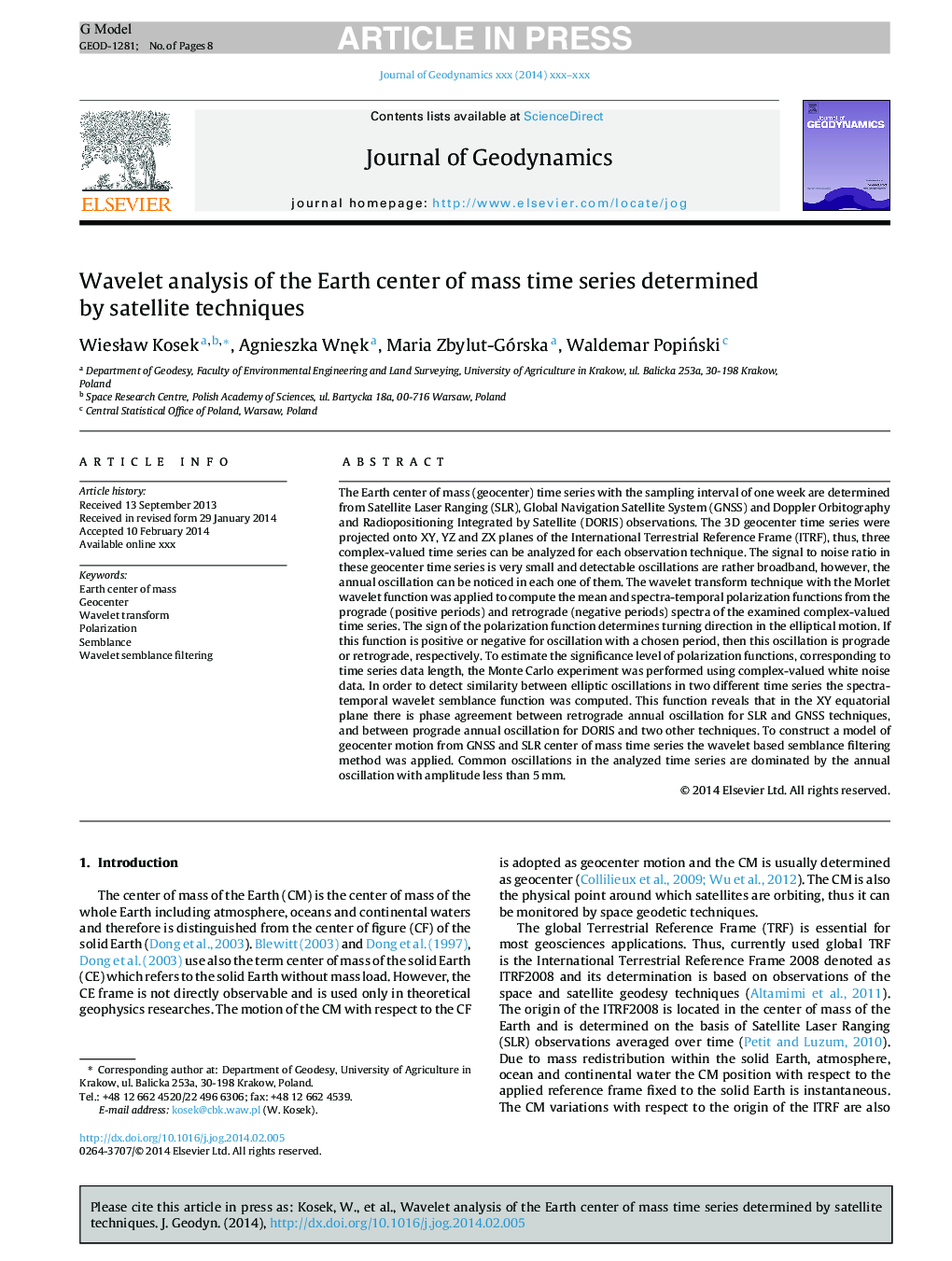| Article ID | Journal | Published Year | Pages | File Type |
|---|---|---|---|---|
| 4688065 | Journal of Geodynamics | 2014 | 8 Pages |
Abstract
The Earth center of mass (geocenter) time series with the sampling interval of one week are determined from Satellite Laser Ranging (SLR), Global Navigation Satellite System (GNSS) and Doppler Orbitography and Radiopositioning Integrated by Satellite (DORIS) observations. The 3D geocenter time series were projected onto XY, YZ and ZX planes of the International Terrestrial Reference Frame (ITRF), thus, three complex-valued time series can be analyzed for each observation technique. The signal to noise ratio in these geocenter time series is very small and detectable oscillations are rather broadband, however, the annual oscillation can be noticed in each one of them. The wavelet transform technique with the Morlet wavelet function was applied to compute the mean and spectra-temporal polarization functions from the prograde (positive periods) and retrograde (negative periods) spectra of the examined complex-valued time series. The sign of the polarization function determines turning direction in the elliptical motion. If this function is positive or negative for oscillation with a chosen period, then this oscillation is prograde or retrograde, respectively. To estimate the significance level of polarization functions, corresponding to time series data length, the Monte Carlo experiment was performed using complex-valued white noise data. In order to detect similarity between elliptic oscillations in two different time series the spectra-temporal wavelet semblance function was computed. This function reveals that in the XY equatorial plane there is phase agreement between retrograde annual oscillation for SLR and GNSS techniques, and between prograde annual oscillation for DORIS and two other techniques. To construct a model of geocenter motion from GNSS and SLR center of mass time series the wavelet based semblance filtering method was applied. Common oscillations in the analyzed time series are dominated by the annual oscillation with amplitude less than 5Â mm.
Related Topics
Physical Sciences and Engineering
Earth and Planetary Sciences
Earth-Surface Processes
Authors
WiesÅaw Kosek, Agnieszka WnÄk, Maria Zbylut-Górska, Waldemar PopiÅski,
